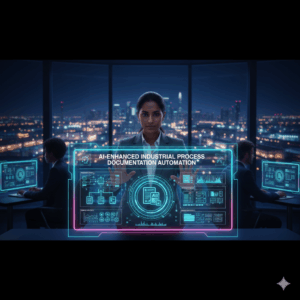Using Artificial Intelligence to Drive the Next Generation of Educational Tools

Using Artificial Intelligence to Drive the Next Generation of Educational Tools
Educational opportunities have historically been among the most effective means by which mankind has made progress. Chalkboards, projectors, textbooks, and tablets are just some of the examples of how each new technological advancement has altered the way in which we teach and how we learn. However, what is going to come after this is not simply another tool.
It is intellect in and of itself.
Artificial intelligence (AI) is quietly and swiftly transforming the method in which we teach our educational system. AI is becoming the digital backbone of a new generation of education tools that promise something extraordinary: learning that is individualized, adaptable, and highly human-centered. This is no longer just a term in Silicon Valley; rather, it is becoming the foundation of the next generation of educational technologies.
Not only are we talking about cutting-edge technology here. It is possible that we are discussing a shift that has the capacity to reimagine classrooms, liberate the potential of individuals, and make high-quality education available to anybody, regardless of location.
Let’s investigate how artificial intelligence is driving the future generation of education, as well as why this is more important than it has ever been.
As opposed to a One-Size-Fits-All Approach, Tailored Learning
It is common for traditional educational systems, particularly those that are implemented in big classes, to take a one-size-fits-all approach. The same lessons are taught to each and every student at the same pace, with the same expectations, regardless of the unique learning styles, speeds, or difficulties that each student may have.
AI completely alters that situation.
Artificial intelligence systems of the modern period are able to monitor how a student interacts with information, including where they halt, what they skip, and what they struggle with, and then change the material instantly. This kind of learning is known as adaptive learning, and it is rapidly becoming the benchmark of excellence.
Imagine this:
- Mathematical software that can identify when a pupil is struggling and provide them with a more straightforward explanation or a visual help.
- A reading application that is able to detect when a youngster is bored and then automatically changes to more interesting content at the appropriate level.
- Based on your individual learning history, a study helper that draws attention to the areas in which you struggle the most before an examination.
- I would not call it science fiction. It is already present here.
Always On, Always Available: The AI Tutoring System
An AI tutor is a virtual assistant that is accessible around the clock and is ready to aid students in comprehending difficult ideas, finding solutions to difficulties, or just maintaining their motivation. It is one of the most intriguing AI-powered products that is now available.
AI tutors, in contrast to human instructors, who are subject to time constraints and costs, are:
- Scalable: They are able to provide assistance to thousands of pupils at the same time.
- Consistent: They seldom experience feelings of fatigue, impatience, or distraction.
Students are able to ask the same “dumb” question a hundred times without feeling embarrassed since the teacher does not pass judgment.
Apps such as Khanmigo (Khan Academy), Socratic by Google, the AI-based feedback offered by Duolingo, and many other more recent platforms are demonstrating how effective and compassionate artificial intelligence tutoring can be, particularly for groups who are underprivileged or located in distant areas.
Personalized comments and grades are provided.
Writing and grading papers takes a lot of time. Providing input that is specific? More so than that.
These days, technologies driven by AI are helping instructors by:
- Assessments consisting of multiple-choice and short-answer questions are graded automatically.
- Writing essays and providing criticism that is constructive, including comments on grammar, tone, and coherence.
- learning gaps are identified via the process of analyzing student development over time.
- It is not the case that instructors are being replaced in this way. This frees up their time so that they can focus on the things that are genuinely important, such as mentoring, motivating, and connecting with pupils.
- Teachers continue to be the driving force behind education. Using AI, they just get extra hands and eyes that are more keen.
The Overcoming of Obstacles in Language and Education
One of the most beneficial aspects of artificial intelligence is its capacity to overcome obstacles, particularly those related to language.
Those students who had difficulty learning in languages that were not their native tongue may now: Provide instant translations of content into the language of their choice.
In order to convey complex ideas, you may make use of voice-activated AI helpers. Subtitles, transcriptions, and summaries that are adapted to their level of understanding are available to them. Apps that are driven by artificial intelligence may also assist children who have dyslexia, attention-deficit/hyperactivity disorder (ADHD), or other learning problems by automatically reducing language, altering the font size, or employing speech-to-text.
It is not only perceptive. It welcomes everyone.
Beyond the Classroom Applications of Artificial Intelligence (AI) for Teachers Educators are also benefitting from AI behind the scenes.
Artificial intelligence (AI) technologies for lesson preparation such as ChatGPT, MagicSchool.ai, and TeachMateAI enable educators to develop lesson plans, activities, and quizzes in a matter of minutes, therefore saving them hours of time spent preparing. Student Analytics Artificial intelligence has the ability to evaluate vast volumes of student data in order to identify patterns, potential dangers, or educational possibilities. This enables educators to act earlier and provide more effective assistance to students.
Relief from Administrative Duties
Chatbots powered by artificial intelligence are now able to manage communication, update timetables, and respond to questions from parents. This frees up more time for teachers to concentrate on teaching rather than on paperwork.
A Look at the Emotional Aspects of Learning
Is it possible for a computer to learn how a learner is feeling? It’s a surprise, but yeah.
Emerging artificial intelligence techniques include the ability to recognize emotions, such as dissatisfaction, boredom, or perplexity, by analyzing facial clues, tone of voice, or typing patterns by analyzing face expressions. Even though it is still early, these capabilities could eventually make it easier for educators to react more rapidly to students’ emotional needs.
Encouragement may be given to a student who is feeling nervous or exhausted. A student who is bored could be given a task that is more difficult. The goal is to reestablish a connection between education and emotional intelligence, which is something that’s often forgotten in conventional institutions.
Caution: What Artificial Intelligence Cannot Replace
AI, despite all the potential it holds, is not a magic bullet that will solve all of education’s problems. It is a matter of genuine concern:
- It is imperative that student information be safeguarded.
- The biases that are present in the training data might be reflected in the AI models.
- Equity: Not all pupils have access to the internet and equipment that are necessary to take use of artificial intelligence.
To begin, artificial intelligence cannot take the place of the human connections that are the hallmark of a successful education. A teacher who is kind, a mentor who is encouraging, and a classmate who is attentive are all invaluable.
AI should not replace the human heart of learning; rather, it should complement it.
Examining the Future: What Does It Have in Store for Us?
It is possible that the following will occur when artificial intelligence gets more firmly ingrained in education:
Intelligent classrooms that adjust the temperature, lighting, and sound in order to facilitate concentration. AI learning companions that remain with a student for years, measuring progress across a variety of disciplines and throughout the course of their lives. Artificial intelligence learning systems that are global in scope and provide students in even the most distant parts of the globe with a free and individualized education. It is possible that in the future, education may not begin with a predetermined curriculum, but rather with a straightforward inquiry: “What is it that you wish to learn today?”
…and an intelligent system that is prepared to lead the way.
A Few Closing Thoughts: A More Intelligent and Kind Future for Education
It is not the goal of artificial intelligence in education to replace instructors or pupils with robots. This is about developing tools that have a deeper understanding of us, that cater to our specific need, and that make learning accessible to everyone.
The goal is to move away from antiquated systems in which pupils are required to conform to the norm and instead construct systems that are tailored to the needs of students. This change is just getting started, and we are just getting started. Already, however, it seems that the future of education will be brighter, more easily available, and more individualized than it has ever been before. Artificial intelligence is not just powering the next generation of educational tools. It is assisting in the development of the next generation of students.





